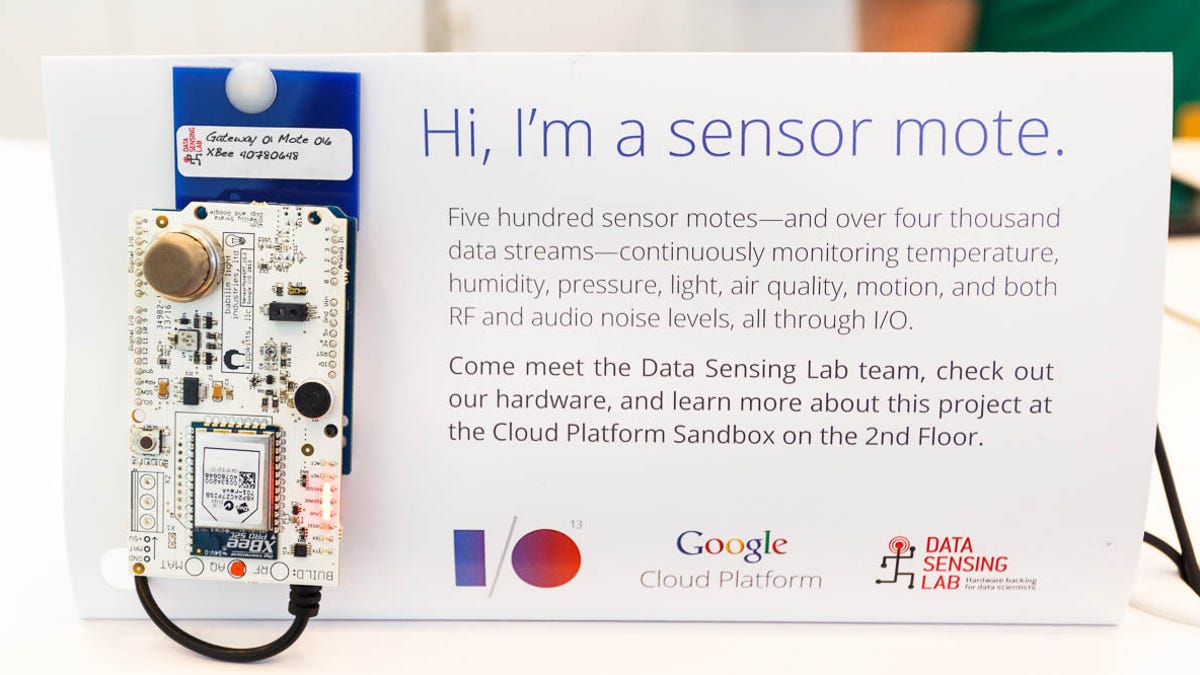Sensor motes sniff out Google I/O data trends
A mesh network of 500 electronics boards captures radio noise, temperature, humidity, and foot traffic at Google's developer show.

We're all used to the idea that Google tracks what we do online. But if you go to Google I/O, you'll find that the data-hungry company, in partnership with the O'Reilly Data Sensing Lab, is keeping tabs on the physical world, too.
At its developer conference, the company has a set up a network of 525 sensor motes. Each small electronics board monitors temperature, humidity, ambient light levels, air quality, audio noise, and radio-frequency noise. And with footstep detectors, some monitor where people are going at the conference, too.
The sensor motes update Google's servers with 4,000 streams of such data.
They're all linked together with a network technology called ZigBee, which can use peer-to-peer connections called a mesh network to better reach across buildings without lots of wireless network routers. Google Executive Chairman Eric Schmidt has predicted that mesh networks will help people bypass government censorship.
With all the data, perhaps Google can actually come up with a way to get wireless Internet to work at a major technology show. If not, it at least can get a potentially interesting look at the much-vaunted "Internet of things."
The Internet of things generally refers to the spread of computing capacity and network connectivity beyond computing devices such as PCs, servers, tablets, and smartphones. The idea is that connecting things like home power meters and car windshield wipers to the Internet will produce data that can be used to get a handle on, for example, neighborhood power demand and weather conditions for traffic control.
Central to the Internet of things are the sensors that gather data. Major issues concerning them include cost, power consumption, battery life, security, and the privacy of data that's gathered.
At Google I/O, the environmental data will be publicized.
"Networked sensor technology is in the early stages of revolutionizing business logistics, city planning, and consumer products. We are looking forward to sharing the Data Sensing Lab with Google I/O attendees, because we want to show how using open hardware together with the Google Cloud Platform can make this technology accessible to anyone," Michael Manoochehri, a developer programs engineer with the Google Cloud Platform, said in a blog post. "With the help of the Google Maps DevRel team, we'll be displaying visualizations of interesting trends on several screens around the conference."

